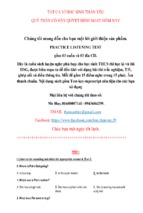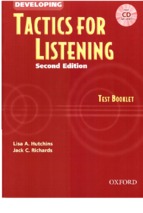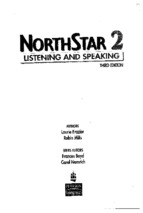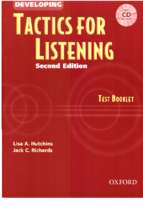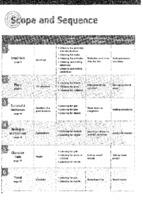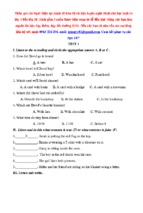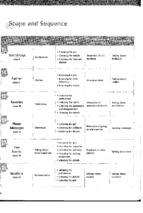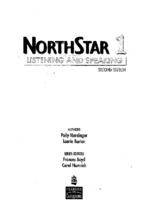Journal of Ship Research, Vol. 56, No. 3, September 2012, pp. 129–145
http://dx.doi.org/10.5957/JOSR.56.3.100031
Journal of
Ship Research
Validation of Potential-Flow Estimation of Interaction Forces
Acting upon Ship Hulls in Parallel Motion
Serge Sutulo,* C. Guedes Soares,* and Janne F. Otzen†
*Centre for Marine Technology and Engineering, Technical University of Lisbon Instituto Superior Técnico, Lisboa, Portugal
{
Force Technology, Kongens, Lyngby, Denmark
The hydrodynamic interaction problem is of great importance for numerical ship handling simulators and at present, only a relatively simple potential double body panel
method can be expected to supply estimates of interaction forces and moments in
real time on commonly used hardware, without limitations on the hull shape, and on
the mutual position and motion of the interacting bodies. Such a code was developed
on the basis of the classic Hess and Smith method and proved to be fast enough
to model interaction in real time when a moderate number of panels is used. In the
present paper, results obtained with the potential code are validated against experimental data obtained in deep and shallow water towing tanks for the case of a tug
operating near a larger vessel. All the tests corresponded to the steady regime and
only cases with parallel center planes were considered here. The comparisons carried out for various discretization of the hulls provide useful information about natural
limitations in breaking at too close lateral distances and about acceptable trade-off
between the computational speed and accuracy. In addition, influence of the nonzero
sway and yaw velocities is investigated numerically.
Keywords: hydrodynamic interaction; potential flow; panel method; tank experimental
data
1. Introduction
MARINE VEHICLES of any kind must often maneuver in the presence of various rigid objects such as other vessels, which can be
moving, anchored, or moored; water basin boundaries; banks of
various shape and length; piers and jetties; and floating production storage, and offloading units. In all those cases, hydrodynamic interaction appears becoming sometimes very significant
and jeopardizes navigation safety. Hence, the ability to predict the
corresponding hydrodynamic loads is of great practical value
and this problem attracted attention of hydrodynamicists for more
than 100 years. Results of interaction studies can benefit the seamanship practice in the following ways:
Qualitative understanding of the interaction phenomena, working out recommendations for ship operators;
Manuscript received at SNAME headquarters May 16, 2010; revised manuscript received October 10, 2011.
SEPTEMBER 2012
Estimation of the peak values of the loads, safe distances, and
safe velocities in overtaking and encountering situations;
Estimation of loads in the mooring lines caused by vessels
passing by;
Analysis of navigational accidents;
Working out maneuvering standards; and
Modeling of interaction effects in computerized maneuvering simulators.
Specifics of the last and the most recent application include that it
requires a combination of reasonable accuracy with high computational efficiency and necessity to predict interaction forces and
moments for arbitrary relative position and motion of all interacting
bodies. Of course, overtaking and encountering maneuvers continue
to be the most critical from the viewpoint of possible accidents, as a
too close approach on crossing courses is not likely. At least, this is
true for ships of more or less comparable size but, for instance, tugboats can approach the assisted ship in a more or less arbitrary way
especially when they work in the pushing mode (van Hilten & Wulder
2006). This paper is mainly aiming to this kind of application.
0022-4502/12/5603-0129$00.00/0
JOURNAL OF SHIP RESEARCH
129
The overall number of publications on the hydrodynamic interactions apparently exceeds 100. As an extensive review of earlier
studies starting from first experimental results reported by Taylor
in 1909 was presented by Norrbin (1975); the review presented
here will mainly focus on more recent contributions. Some of
these studies consider specifically the ship-to-ship interactions
while some others concentrate on bank-suction problems especially when the ship is sailing in a canal. In many cases, however,
both types of problems are solved with similar methods, which
can be divided into theoretical, experimental, and numerical. Of
course the dividing line between “theoretical” and “numerical”
approaches is often fuzzy as every numerical method always has
certain theory behind it, whereas any theoretical solution must end
in computations. Typically, numerical methods are more straightforward, require better computing power, and are more versatile in
applications while theoretical methods mostly are based on certain
asymptotic assumptions about the shape of the bodies and their
mutual location and motion.
A fundamental theoretical study of the ship-to-ship interaction
was carried out by Abkowitz et al. (1976). Their formulation was
based on the so-called Havelock hypothesis according to which
the potential flow model with rigid flat free-surface corresponding
to the zero-Froude-number case is sufficient to explain the interaction phenomena. This hypothesis looks quite reasonable at low
Froude numbers and, although not quite accurate, was exploited
in many studies including the present one. Abkowitz et al. (1976)
introduced, however, additional assumptions: the ship hulls were
supposed to be slender, they were approximated with bodies of
revolution and these were approximated with axial source and
dipole distributions. Horizontal dipoles originated from lateral
motions of the “own” ship (i.e., the ship of interest) with respect
to water and from the induction of the other ship, and vertical
dipoles were added in shallow water. The strength of the dipoles
was determined as result of a fast iteration process and the forces
and moments were computed basing on the Lagally–Cummins
formulae. The agreement with experimental data was not very
good and to make it acceptable, a certain effective beam of the
equivalent body of revolution was to be introduced. It was found
that unsteadiness of the flow affects much more the yawing
moment, than the sway force.
Beck (1977) applied the matched asymptotic expansions method
to the problem of ship-to-bank interaction in a shallow channel.
In the outer region, the shallow water theory was applied, so the
final results depended on the depth Froude number. Besides sway
force and yaw moment computed with the Blasius formulae, the
sinkage force and trimming moment were estimated from the linearized Bernoulli integral. A conclusion was drawn that the horizontal two-dimensional (2D) model was not satisfactory even at
very small bottom clearances. A similar method was much later used
by Kijima (1997) who studied interaction between three bodies: two
ships running parallel in the proximity of a pier simulated with a
circular or oval cylinder. In this study, the hydrodynamic part was
combined with dynamics of the ships and time histories for forces
and motion were obtained.
Interesting theoretical studies were undertaken by Yeung (1978)
who applied the slender-body theory and the method of matched
asymptotic expansions. The method results in relatively fast algorithms and accounts for the Kutta condition on the aft part of the
hull, but it heavily underestimates sway forces and yaw moments
in the most interesting case of small separation between the hulls.
A similar approach was used by Yeung and Tan (1980) to study
interaction with some fixed obstacles like a protruded wall, wedge,
or embankment corner. This study was later extended by Hsiung
and Gui (1988) to a larger variety of obstacles.
Tuck and Newman (1974) performed one of the best asymptotic
studies of the ship-to-ship interaction problem. Two situations
were investigated, both for the zero Froude number. In the first
case, the water depth was assumed to be infinite or finite but
relatively large. The so-called first-order theory was constructed,
that is, each ship was just sailing in the flow field of its partner.
Then, the lateral loads on each of the slender hulls were computed using the generalized Taylor theorem for a body moving in
an accelerated uniform flow. The Kutta condition was accounted
for on sterns of finite height. The theory resulted in formulae
for the sway force and yaw moment having a quadratic form
structure. Namely, for a ship in parallel uniform motion with the
Nomenclature
Ci =
G() =
H=
m=
mi =
n=
N=
p=
r=
r=
S=
T=
u=
v=
V=
X=
x, y, z =
Y=
g rts ; ers =
130
origin of the body axes for the ith body
Green’s function
depth of the fluid
number of interacting bodies
components of the generalized normal
outer unity normal
yaw moment
pressure
position vector
velocity of yaw or distance
rigid boundary in the fluid
fluid kinetic energy
velocity of surge
velocity of sway
velocity
surge force
coordinates in the body axes
sway force
Boltzmann’s symbols
SEPTEMBER 2012
x, h, z =
mij =
pr =
r=
s=
F=
f=
W=
wi =
Ñ=
coordinates in the global fixed axes
added mass coefficients
a quasi-coordinate
water density
source density
total velocity potential
perturbation potential
angular velocity
a quasi-velocity
the Hamilton operator
Subscripts
Ci =
cur =
e=
i=
I=
p=
r=
related to the origin of the ith body
current
proper (eigen)
number of the body (ship)
induced
(total) potential force/moment or “pressure” velocity
relative
JOURNAL OF SHIP RESEARCH
SEPTEMBER 2012
+
+
+
+
+
+
+
added masses. Ship overtaking maneuvers were simulated and
collision-dangerous situations were traced.
Finally, a Reynolds-Averaged Navier–Stokes Equation (RANSE)
code was applied by Chen et al. (2003) for tackling the problem
of ship-ship interaction in shallow water. Good agreement with
experimental data was demonstrated except for the case of relatively small distance between the boards when insufficient fineness of the grid was suspected.
Pinkster (2004) focused on a rather specific interaction problem
related to necessity of estimation of the mooring line loads originated from vessels passing by. Specifics of the situation are that
although the passing vessels sail at deeply subcritical Froude
numbers even in small water depth and the Havelock hypothesis
must hold, these vessels generated low-frequency seiches in the
harbor area whose influence dominates the near-field interaction.
Hence, in Pinkster’s algorithm the near-field interaction was
completely neglected as well as the ship-waves wash. The moving
ship was considered as a wave generator and then a diffraction
problem was first solved in the frequency domain and further converted to the time domain by means of the fast Fourier transform.
An interesting case where the free-surface interaction effects
turned out decisive was studied numerically by Söding and Conrad
(2005). A real collision case happened on the Elba River and was
studied post factum. A larger vessel with dimensions L B T ¼
264.0 39.9 11.4 m was running at 15 kn and overtaking a
smaller ship with particulars L B T ¼ 101.0 18.4 6.3 m
cruising at 13.5 kn speed. The water depth was about 14.5 m
making the depth-based Froude number equal to 0.65, that is, large
enough for most shallow-water wavemaking effects to show up.
The distance between the centerplanes of the ships was 150 m,
which makes the near-field interaction negligible while the waveorigin interaction was so strong that the smaller ship was captured
by depression of the water surface, lost its steering capability,
and finally collided with the overtaking vessel. Two different
Rankine source nonlinear free surface potential flow codes were
used and results were compared with experimental data giving
very good agreement for the yaw moment, a satisfactory one for
the surge force, and a somewhat worse agreement for the sway
force. One of the codes was run with and without vortex distribution aiming at satisfying the Kutta condition. The difference
was only significant for the sway force, where presence of vortices
improved the agreement.
A large group of studies was based on experimental methods.
An approximate empirical method for predicting forces in overtaking maneuvers was developed by Brix (1993). Extensive automated tests with scaled models of four different shapes were carried
out by Vantorre et al. (2002) covering only parallel motion, that
is, overtaking, passing by, and encountering situations in shallow
water. A special two-carriage experimental layout was used and
time histories of the surge and sway interaction forces and of the
yaw moment for various lateral distances and speed values were
obtained. On the basis of the huge amount of assembled data a
simple approximate empiric method for estimating peak values of
the interaction forces was proposed. Later, Vantorre et al. (2003)
also studied interaction of a moving ship with banks of various
configurations. Results were finally processed to the form of regressions for the sway force and yaw moment, which were found to
depend on the under-keel clearance, distance between the ship
and the bank, Froude number, propeller slipstream velocity, and a
few hull form parameters.
+
other the formula for the loads had the structure aV1 V2 þ bV22 ,
where a, b are constant coefficients, V1 is the speed of the “own”
vessel upon which the estimated force is acting, and V2 is the
speed of another or “target” ship. Here, one of the limitations of
the theory is obvious: when the target ship is at rest, no interaction is observed. The second studied case is related to the pair
of ships moving with the same speed in extremely shallow water.
Here the flow was considered far-field 2D in the horizontal
plane and was treated by matched asymptotic expansions. Threedimensional (3D) effects were accounted for by means of the
so-called blockage coefficient. The paper also explains why the
double-body potential formulation makes sense in the interaction and maneuvering problems: unlike what is happening in
seakeeping and wave resistance problems, this approximation
still remains nontrivial and captures the main effect. It was also
supposed that viscous effects would be more significant than
those related to the wavemaking.
King (1977) focused on unsteady effects accompanying interaction of two bodies using a 2D formulation, that is, the water
depth was assumed to be close to the draft. The wavemaking was
completely neglected and the linearized airfoil theory was applied.
The lateral distances had to be comparable to the ship lengths. The
agreement with experimental data was only judged to be satisfactory for the sway force on the stationary (not moving) body. King
and Tuck (1979) investigated a somewhat complementary problem of the steady motion of slender ships parallel to banks. It was
shown that in the inner region near a beach with the constant slope
at zero Froude number the inner problem becomes isomorphic to
the axial flow problem. Gui et al. (1992) discussed application of
the Schwarz–Christoffel transformation to the 2D problem of a
maneuvering ship interacting with polygonal boundaries. A simplified theoretical study was undertaken by Mastushkin (1977),
who studied the case of parallel (in the same or opposite directions) motion of two ships. Within the double-body approach each
hull was approximated with an ellipsoid with the axes equal to
the length of the ship, its breadth, and doubled draft. The velocity
potential was defined approximately through the iteration process.
Analytic velocity potentials for isolated ellipsoids were taken
as the first approximation. The cited article does not contain any
validation against experiments or independent numerical results.
That validation was, however, done by the author in his earlier
studies related to the case of zero drift angles. The main conclusion drawn from these works is that even a very crude approximation of the ship hull can bring good estimates for the interaction
forces at least in some situations.
One of the first applications of a numerical method belongs
likely to Ivanov (1981) who successfully applied the potential flow
algorithm by Hess and Smith to the zero –Froude number interaction problem. However, all the computations were performed
offline as the then available computing hardware was too slow. A
more advanced but still offline application of another version of
the 3D panel potential code was undertaken by Korsmeyer et al.
(1993) who studied body-to-body interaction in a rectangular
canal. Only parallel motion was studied for two spheroids, two
Mariner ships, and two Panamax bulk-carriers. Comparisons with
experimental data showed a fairly good agreement.
A direct 3D potential-flow formulation was also exploited by
Yasukawa (2003) who used an unspecified implementation of
the panel method for determining the flow potential and the interaction forces which were expressed through a set of generalized
JOURNAL OF SHIP RESEARCH
131
Ch’ng et al. (1993) carried out bank-interaction experiments
with MarAd and S-175 models equipped with propellers but without rudders. The varying factors were: the Froude number, relative
bottom clearance, lateral distance, bank slope angle, and the
thrust. Linear regressions were devised and it was demonstrated
that the propeller thrust may influence substantially the interaction
sway force and yaw moment.
Li et al. (2003) developed another empirical model for predicting interacting forces with banks of three standard shapes:
vertical, sloping, and flooded (stepped). The obtained regressions
were validated against independent tests and used in simulations.
A more specialized experimental study focusing on inland vessels
was performed by Gronarz (2006). Interesting details about this
study include original measurement records showing uncertainty
levels, investigation of the influence of the propeller, and convenient approximations for the forces.
Ankudinov et al. (2006) outlined an integrated approach to bank/
obstacle interaction problem. Although no specifics are given, it
can be classified as a kind of data assimilation method based,
among other things, on certain undisclosed theoretical considerations, although solution of the full hydrodynamic interaction
problem was likely avoided. Lee and Kijima (2003) applied some
previously developed interaction estimation algorithm to analyze
the behavior of interacting ships in restricted waterways and
under wind action.
Varyani et al. (2003) studied mooring-lines loads originating
from the hydrodynamic interaction between the moored vessel and
the passing by ship. The zero –Froude number theory was used to
estimate the flow field around the moving ship and the pressure
integration resulted in estimates for the surge and sway forces
and the yaw moment acting on the moored ship. Although the
final formulae do not look obvious and the back interaction from
the moored ship was completely neglected, comparisons with
experimental results showed fair agreement. Later, this and other
similar studies resulted in a generic set of approximations of
interaction sway forces and yaw moments proposed by Varyani
et al. (2004).
It seems that lately more focus has been given to experimental
studies and attempts to develop some simple, regression-type,
algorithms for fast calculation of interaction forces. This is, likely,
caused by real-time and accelerated-time simulation requirements.
In-loop numerical methods can then seem inconvenient.
However, the drawback of all available empirical approximations (and also most analytic solutions) is that they can only
cover a limited number of situations. For instance, most of the
ship-ship interaction studies were performed for the case of zero
yaw velocity and for ships on parallel courses and with parallel
center planes. These may be sufficient to predict the most dangerous situations in overtaking maneuvers but are not enough for
correct description of the interaction in all possible situations,
which is highly desirable for bridge simulators. For example,
when simulating maneuvers of a large ship assisted by tugs working also in the pushing mode (van Hilten & Wulder 2006) it would
be highly undesirable to impose any restrictions on the mutual
motion and position of the involved vessels. On the other hand,
the computing power of even average personal computers has
grown during late years to such an extent that certain numerical
algorithms can be certainly used online without hampering the
simulation, although this is still not true for viscous-flow and/or
free-surface codes.
132
SEPTEMBER 2012
In general, the hydrodynamic interaction phenomenon can be
viewed as being composed of five simpler phenomena:
Near-field potential interaction without a free surface;
Interaction related to the free-surface effects or wavemaking
interaction;
Boundary layer and viscous wake interaction;
Interaction caused by longitudinal trailing vortices; and
Action of propeller slipstreams and of the thrusters jets.
It is still difficult to draw definite and precise conclusions about
the relative contribution of each component but certain experience
and data accumulated so far indicate that the near-field double
body potential interaction can be the most important component
in many cases, that is, the Havelock hypothesis is pretty much
justified. On the other hand, this is one of the few hydrodynamic
models which can be treated numerically online in real time at
least when the accuracy requirements are eased and the number of
approximating panels is reduced. An alternative could be a vortexlattice method, which has the potential advantage of the possibility of accounting for the Kutta condition when it is thought
indispensable. The latter is caused by viscosity but once formulated can be applied to nonviscous flows requiring, however, presence of vortices which cannot appear in the perfect fluid. While
the Kutta condition can be easily formulated in the case of lifting
bodies and surfaces with sharp trailing edges it turned out impossible to create an adequate formulation for most slender ship
hulls and it is mostly accounted for through neglecting part of
the predicted transverse load on the aft part of the body when it
goes about proper forces and moments. It is much less clear how
it should be formulated in the three-dimensional interaction case
and the literature data are, in general, inconclusive and do not
definitely indicate the importance of the corresponding contribution. It is much easier to apply the Kutta condition in the twodimensional models when it is sufficient to impose a circulation
(Dand 1976), but such a model is poorly applicable even at
extremely low water depth.
That is why, sticking with Havelock hypothesis mentioned
above, Sutulo and Guedes Soares (2008) have developed a code
based on the classic Hess and Smith method suitable for online
computations of interaction forces for an arbitrary number of
ship hulls with arbitrary relative position and motion, primarily in
deep water. This method was later fused with the maneuvering
simulation code and an uncontrolled and controlled motion of
two vessels in overtaking maneuver was actually simulated (Sutulo
& Guedes Soares 2009). After those publications, the code was
extended to cover the flat bed shallow water case. All validations
of the code were so far either internal (comparisons with analytic
solutions, convergence studies) or numerical results were only compared against approximate empirical methods.
In the present paper, the code is validated against experimental
results obtained in towing tanks for a specific tugboat operating
near a typical large vessel. Although the code works at any combination of position and motion of the involved vessels, only
results related to parallel motion with equal speeds are validated
here. They are also complemented with demonstration of the influence of the sway and yaw motion obtained numerically. The exposure of numerical results is preceded by description of the method
and of the experimental setup and followed by conclusions. The
general consistency of the approach followed is also confirmed
by the fact that a similar online numerical method for estimating
JOURNAL OF SHIP RESEARCH
the interaction forces was recently and independently applied by
Xiang and Faltinsen (2010).
2. Computation of Interaction Forces by means
of the Potential-Flow Code
2.1. Problem statement and governing equations
Let Oxhz be the Earth-fixed right-handed Cartesian frame of
reference with the origin located on the undisturbed free surface
of the perfect fluid and with the z-axis directed downwards as
illustrated in Figure 1. The fluid is either infinitely deep or limited
with a horizontal flat rigid bottom located at z ¼ H.
The direction of the x-axis can be chosen arbitrarily, depending
on the nature of the specific problem. There are in this fluid some
bodies described by their wetted surfaces Si, i ¼ 1, . . . , m, which
can be submerged completely, float on the free surface, or be
somehow fixed to the bottom. In the general case, the actual surface may depend on the time t at least (for rigid bodies) in terms
of their position. These bodies can represent ships, submersibles,
pieces of banks, any structures, islands, etc. The number m of these
bodies is arbitrary but finite and in fact most situations are covered
by m � 2. Then, attached to each body is the frame, Ci xiyizi , which
can coincide with the Earth axes at some time moment. At any
time moment t, the position of each body can be described with the
vector ri or with the coordinates: advance xCi, transfer hCi, and
submergence (heave) z Ci, as well as with the standard Euler
angles: heading y i, pitch qi, and roll wi. The instantaneous motion
of each body is described with the vectors of the velocity of the
origin VCi and of the angular velocity Wi. Alternatively used are
the linear and angular quasi-velocities of surge, sway, heave, yaw,
pitch, and roll: ui, vi, wi, pi, qi, ri. Within the formulation followed
here, the scalar parameters related to the position and motion in
the plane other than horizontal are identically equal to zero.
It is supposed that the fluid is perfect and the flow is irrotational, so it is fully described with the potential F(x, h, z, t) at z �
0, above the bottom and outside the bodies. Also, it is worthwhile
to suppose that a horizontal uniform currently described by the
velocities Vxcur and Vhcur or by the vector Vcur is present. The total
potential can then be represented as
F ¼ Vxcur x þ Vhcur h þ f;
ð1Þ
where f(x, h, z, t) is the perturbation potential and the perturbation (induction) fluid velocity will then be VI ¼ Ñf. At each
time moment, the perturbation potential satisfies the governing
Laplace equation
Df ¼ 0;
ð2Þ
and the nonpenetration boundary condition on each body
¶f
¼ Vr � n
ð3Þ
¶n
where n is the outer unity normal to each body and the relative
local velocity is
Vr ¼ V � Vcur ;
ð4Þ
where V is the absolute local velocity of a point on the body surface, depending in the common way on the parameters VCi and Wi.
The low –Froude number assumption yields the following condition on the free surface:
¶f
¼0
¶z
ð5Þ
and the same condition must be applied on the flat horizontal
bottom. In the case of deep fluid, the perturbation potential must
vanish at infinity.
As the governing equation is elliptic, the time only enters in the
formulation as parameter but in the case of moving bodies the
boundary is unsteady and the Neumann problem must be resolved
at any time moment.
2.2. Solution
2.2.1. General theory. The formulated problem is standard and
a common method of solution is to distribute a single layer of
sources with density s on the entire wetted surface. Then, the
following Fredholm integral equation of the second kind holds:
ð
2ps ðMÞ þ s ðPÞ
S
¶GðM; PÞ
dSðPÞ ¼ f ðMÞ;
¶nM
ð6Þ
where M(x, y, z) and P(x ¢, y ¢, z ¢) are respectively the field (observation) and the source points belonging here to the surface S
which consists of all the wetted surfaces present in the current
problem. The Green function G() in the case of deep fluid and
rigid free surface takes the form
Fig. 1 Frames of reference in the case of two ships
SEPTEMBER 2012
1 1
ð7Þ
Gðx; y; z; x¢; y¢; z¢Þ ¼ þ ― ;
r r
pffiffiffiffiffiffiffiffiffiffiffiffiffiffiffiffiffiffiffiffiffiffiffiffiffiffiffiffiffiffiffiffiffiffiffiffiffiffiffiffiffiffiffiffiffiffiffiffiffiffiffiffiffiffiffiffiffi
where
r ¼ ðx � x¢Þ þ ðy � y¢Þ þ ðz � z¢Þ
and
pffiffiffiffiffiffiffiffiffiffiffiffiffiffiffiffiffiffiffiffiffiffiffiffiffiffiffiffiffiffiffiffiffiffiffiffiffiffiffiffiffiffiffiffiffiffiffiffiffiffiffiffiffiffiffiffiffi
―
r ¼ ðx � x¢Þ þ ðy � y¢Þ þ ðz þ z¢Þ.
Application of the same mirror-image principle to the finite
depth fluid case results in a more complicated formula for the
Green function:
�
1 �
1 1
Gðx; y; z; x¢; y¢; z¢Þ ¼ (
þ― ;
ð8Þ
i¼�1 ri
ri
JOURNAL OF SHIP RESEARCH
133
ð
VI ðMÞ ¼ s ðPÞÑM GðM; PÞdSðPÞ;
ð9Þ
S
ð
fðMÞ ¼ s ðPÞGðM; PÞdSðPÞ:
S
The pressure distribution is then calculated through the unsteady
Bernoulli equation which in moving frames takes the form
(Lamb 1968)
�
��
¶f 1 �
ð10Þ
p ¼ r � þ V2r � V2p ;
¶t 2
where r is the fluid density and
Vp ¼ VI � Vr :
ð11Þ
Then, the potential force Fpi and moment Mpi acting on ith body
will be:
ð
ð
Fpi ¼ � pn dS; Mpi ¼ � pr ´ n dS:
ð12Þ
Si
Si
The potential hydrodynamic load can be also represented in the
standard component form, that is, in the plane motion problem, in
terms of the surge force Xp, sway force Yp, and yaw moment Np.
The thus defined forces and moments will, however, include the
proper inertial hydrodynamic loads which are already accounted
for in all consistent maneuvering mathematical models. So, to
obtain the pure interaction forces, proper potential loads must be
also calculated and subtracted from the loads defined by (12). The
pressure Equation (10) includes the local derivative ¶f
¶t , which
vanishes for steady flows. When the pressure and loads in the
unsteady flow are determined with the local derivative dropped,
the corresponding solution is called quasi-steady.
2.2.2. Determination of proper inertial forces and moments.
The most convenient way to calculate the proper inertia loads is to
apply the added-mass formalism associated with the equations
devised by Thomson, Tait, and Kirchhoff (Lamb 1968). The
starting point is the following representation of the kinetic energy
of the fluid in the presence of a moving rigid body:
where wj are the quasi-velocities of the body in concern (i.e.,
w1 º u—velocity of surge, w 2 º v—velocity of sway,. . ., w6 º
r—angular velocity of yaw) and mjk are the added mass coefficients defined for the ith body as
ð
mjk ¼ �r fj mk dS
ð14Þ
Si
where m1, m2, m3 are the projections of the normal n onto the body
axes x, y, and z respectively and m4, m5, m6 are similar projections
of r n. Each of the potentials fj is obtained as solution to the
Equation (6) with the right-hand side f (M) ¼ mj (M).
Applying the third Newton law, it is possible to obtain from the
Euler–Lagrange equations (Lurie 2002) the following representation for the generalized hydrodynamic reactions Ps, s ¼ 1, . . . , 6:
� �
6
6
d ¶T
¶T
¶T
¶T
þ ( g rts
wt þ ( esr
�
;
ð15Þ
�Ps ¼
r;t¼1
r¼1
dt ¶ws
¶wr
¶p r ¶p s
+
pffiffiffiffiffiffiffiffiffiffiffiffiffiffiffiffiffiffiffiffiffiffiffiffiffiffiffiffiffiffiffiffiffiffiffiffiffiffiffiffiffiffiffiffiffiffiffiffiffiffiffiffiffiffiffiffiffiffiffiffiffiffiffiffiffiffiffiffiffiffi
where
ri ¼ ðx � x¢Þ þ ðy � y¢Þ þ ðz � z¢ þ 2iH Þ
and
pffiffiffiffiffiffiffiffiffiffiffiffiffiffiffiffiffiffiffiffiffiffiffiffiffiffiffiffiffiffiffiffiffiffiffiffiffiffiffiffiffiffiffiffiffiffiffiffiffiffiffiffiffiffiffiffiffiffiffiffiffiffiffiffiffiffiffiffiffiffi
―
that
is
considered
as
r i ¼ ðx � x¢Þ þ ðy � y¢Þ þ ðz þ z¢ þ 2iHÞ
a series of double hulls with the distance 2H between the waterplanes. In practical computations, the series are truncated as farther
mirror images have weak influence on the pressure distribution on
the central body.
In this context, the point coordinates can be taken in any suitable frame of reference, that is, one can use x instead of x, etc.
The right-hand side of the equation is f(M) ¼ Vr (M)�n(M) when
the boundary condition (3) is in effect.
After the Equation (6) is solved, the induction velocity and
potential distributions can be expressed through the already
known single-layer density s(M):
where g rts and esr are the Boltzmann symbols whose definitions and
methods of evaluation are given by Lurie (2002) and p s are the
quasi-coordinates, that is, p_ s ¼ ws. It can be shown that in the case
of a body in the unbounded fluid the fluid kinetic energy does not
depend on the generalized coordinates and on the quasi-coordinates.
Then, for the horizontal components of the proper hydrodynamic
inertial forces Xe, Ye, and Ne, which are most important for the
majority of applications, it can be obtained after some evaluations:
Xe ¼ �m11 u� þ m22 vr;
ð16Þ
Ye ¼ �m22 v� � m26 r� � m11 ur;
N ¼ �m v� � m r� þ ð m � m Þuv � m ur:
e
26
66
11
22
26
The pure interaction forces will then be
XI ¼ Xp � Xe ;
YI ¼ Yp � Ye ;
NI ¼ Np � Ne :
ð17Þ
Most of the proper force corrections, except for the Munk moment,
are only present in unsteady and/or curvilinear motion. In the most
popular case of overtaking in parallel paths all the corrections will
be zero if only the motion with zero drift angle is presumed.
The elegancy of the added mass approach to evaluating potential forces on an isolated body in unbounded fluid stimulated
several attempts to extend it to the case of interacting bodies
through introduction of generalized inertial coefficients similar to
added masses but accounting for the interaction as done, for
instance, by Yasukawa (2003). However, apparently this approach
makes little sense as these generalized parameters will inevitably
depend on the instantaneous configuration of the hydrodynamic
system and, in the general case, must be recomputed at every
refreshment step. The main advantage of the added mass formalism consisting in the possibility to describe completely inertial
hydrodynamic properties of any rigid body with only 21 constant
parameters is therefore lost and the resulting algorithms seem to
be even less economical than the direct force calculation. Similar
complications occur in the hydrodynamics of deformable bodies.
Another approach based on the application of the momentum
conservation theorem (Korsmeyer et al. 1993) is more promising
but close analysis showed that it does not have serious advantages
over the direct pressure integration either.
6
T ¼ 12
(m
jk
j; k¼1
134
SEPTEMBER 2012
wj wk ;
ð13Þ
2.2.3. Numerical algorithm. Most of the developed methods
of solution to the Equation (6) and further calculations of the
JOURNAL OF SHIP RESEARCH
integrals (8) are based on the discretization of the surface S into a
n
S
number of primary panels, that is, S ¼
Sj , further approxima-
Table 1 Main particulars of tug and tanker model
Tug (Ship 1)
j¼1
+
tion of each primary panel with a simpler computational panel.
Then, certain assumptions about the distribution of the source
density are adopted, which make possible the computation of the
influence functions from one panel to another analytically or with
some efficient integration formulae. The nonpenetration boundary
condition is usually satisfied at some collocation point on each
panel, which results in a n n linear algebraic set of equations
that typically happens if the source density is assumed constant
over each panel. If the distribution over each panel is described by
more than one parameter, the order of the linear set can be higher
than the number of panels in consideration. As the resulting linear
set is practically always well-conditioned with a dominant diagonal, iteration methods of solution are normally preferred which
gives the computation time approximately proportional to n2.
The most popular and, historically, the first potential flow
method developed by Hess and Smith (1964, 1967) uses flat
quadrilateral panels and constant source density on each panel.
A number of improved higher-order methods have appeared later.
Examples of these are the method by Kough and Ho (1996)
and—one of the latest developments—a method based on the
spline approximation of the surface, not using explicit panels
(Ni et al. 2005).
A thorough inspection of publications on potential flow calculations indicates, however, that while higher-order methods have
sensible advantage in accuracy and efficiency for smooth bodies
(spheres, ellipsoids etc.), this advantage nearly vanishes for practical ship forms which can include knuckles, regions of rapidly
changing curvature, transom, outer keels, etc. Also, in the interaction problems grid refinement at small gaps may be required
anyway. Bratu (1975) indicated that inappropriate use of a higherorder method can even decrease the accuracy. A similar opinion
was expressed by Bertram (2000, p. 218). Most often, from the
viewpoint of overall efficiency the classic Hess and Smith method
with flat panels appears to be the best option especially bearing
in mind that this method is perfectly and flawlessly described in
the easily available publications cited above. That is why in the
present study this method was selected and implemented anew,
with adaptation to multibody computations.
3. Experimental Determination of Interaction Forces
+
+
+
All model tests were conducted in the towing tanks at FORCE
Technology. The tests were conducted in both the shallow tank
with the horizontal dimensions (25m 8m) and with the depth
that can be varied from 0 to 0.25 m, and the deep water towing
tank (240m 12m 5.5m).
3.1. Geometry and conditions
The hulls of the tug and the assisted ship were considered in
model scale 1:25. The assisted ship was a conventional tanker and
the tug was a Svitzer M-class ASD tug. Both models were tested
unpropelled. The main particulars of the ships are listed in
Table 1. The used coordinate system and sign convention of the
forces acting on the tug is as illustrated in Figure 1.
SEPTEMBER 2012
Main Particulars
Unit
Full scale
Model
Length overall, LOA
Length between
perpendiculars, L
Breadth, B
Draft, T
Displacement, Ñ
m
m
29.5
25.6
1.18
1.024
m
m
m3
11.0
4.6
649
0.44
0.184
0.0416
Tanker (Ship 2)
Full scale
Model
189.5
186.2
7.58
7.44
31.6
10.3
49197
1.26
0.41
3.15
3.2. Model test setup
The model of the tanker was attached underneath the carriage,
fixed in all degrees of freedom, as seen in Figure 2. The tug
model was placed with various heading angles (however, only
results corresponding to the zero heading angle are discussed
here) and positions around the tanker. The model of the tug was
connected to the carriage via two strain gauges positioned fore
and aft inside the model, which was free to heave, roll, and pitch.
The longitudinal and transverse loads measured by the gauges
were transformed in the obvious way into the surge and sway
force components and the yaw moment acting on the tug. The
tanker model was fully fixed during the tests and no forces acting
upon it were measured as being considered not interesting in the
case of a much smaller interacting craft.
3.3. Test Program
The applied test program included variations of longitudinal
and transverse relative positions between tug and tanker for
three different water depths and two speeds. One of the depths
corresponded to the deep-water tank and could be considered as
infinite. The dimensional and dimensionless values of the remaining two depths H1 and H2 are given in Table 2.
The tests were performed at two towing speeds corresponding
to 4 kn and 6 kn in full scale. More detailed data about these speed
regimes are presented in Table 3. All data was acquired as time
series using a sampling frequency of 45 Hz. The time series were
only recorded after the carriage had reached steady velocity.
The force contribution due to the presence of the tanker, that
is, interaction forces, was evaluated by subtracting the forces
measured in the tests with the tug alone from the forces measured
in the tests with both tug and tanker.
3.4. Uncertainty estimation
The assumed value of the relative mean square estimate of
the error of one measurement based on multiple uncertainty
assessment carried out for different conditions and models at
the FORCE Technology tanks was estimated to be 5%. Assuming
that any possible bias had been eliminated, the observed error was
treated as random and Gaussian. As the interaction forces and
moment were always obtained as differences between the corresponding components measured on the tug model in presence and
absence of the tanker model, the resulting variance was calculated
as doubled variance of one measurement. The resulting absolute
mean
pffiffiffi square was only larger than the original error by the factor
2, although the relative error could be substantially larger when
JOURNAL OF SHIP RESEARCH
135
Fig. 2 Model test setup
4. Numerical Results
Table 2 Depth conditions
4.1. Body surface discretization
Depth Relative to:
Absolute Depth in Full Scale
Draft of the tug T1
Draft of the tanker T2
2.66
3.38
1.19
1.51
H1 ¼ 12.25m
H2 ¼ 15.57m
Table 3 Speed regimes data
Speed Value in Full Scale
Froude Number Based on:
Knots
m/s
Length of
the tug L1
Length of
the tanker L2
Depth H1
Depth H2
4
6
2.06
3.09
0.13
0.195
0.048
0.072
0.188
0.282
0.167
0.25
the interaction load was obtained as a small difference. On some
of the plots in the next section, calculated error bars are shown. As
the described estimation procedure presumed access to the loads
on the model measured both in free run and in presence of the
interacting ship and these data were not always available, the error
bars are not shown on all the plots but they should be expected to
be of similar length.
136
SEPTEMBER 2012
The two ship forms, a tug (Ship 1) and a tanker (Ship 2),
described in the previous section were used for all the calculations
presented in this article. The number of offsets in the delivered
hull shape description files made possible creation of a very large
number of panels for each vessel without interpolation. However,
the resulting grid was impractical and a special file management
program was developed, which first, transformed the hull offsets
into the format required by the panel code, then recreated vertices
of the sections in conformity with the given ship draft and, finally,
the data were thinned along the sections and along the vertices on
each section to obtain rougher but, expectedly, more economical
form representations. A parametric cubic spline interpolation was
used to redistribute the vertices on a section appropriately.
The summary of the number of panels used for computations
performed for the present study is given in Table 4 and graphical
representation of the ship surfaces with various numbers of panels
is shown in Figures 3 to 5.
4.2. Forces and moments: numerical results and comparisons
Most of the computations were performed for validating the
algorithm against the experimental data and for estimating possible error at various numbers of panels. Hence, reproduced here
were situations supported by experimental data. As in course of
the experiment both models were always towed with the same
JOURNAL OF SHIP RESEARCH
Table 4 Number of panels in computations
Total Number
of Panels
3506
936
570
356
292
Number of
Panels on Ship 1
Number of
Panels on Ship 2
1392
378
210
128
120
2114
558
360
228
172
velocity V, the calculations were carried out in the quasi-steady
mode. The origin of the body axes associated with Ship 2 was
placed in the origin of the global frame, so the global ordinate h of
Ship 1 also served, with the inversed sign, as the side distance
from Ship 2 and the corresponding abscissa x as the longitudinal
stagger of Ship 1. The heading angle y was always kept zero
for both vessels as well as the drift angle b in case of parallel
rectilinear towing. The following nondimensional parameters
were used to represent the results: the longitudinal dimensionless
stagger x¢s ¼ 2x=L2 , dimensionless lateral offset h¢s ¼ 2h=B2 ,
¢ ¼ 2X1;2 =ð rAV 2 Þ, dimensionless
dimensionless surge force X1;2
2
¢
yaw
sway forces Y1;2 ¼ 2Y1;2
=ð rAV Þ,
and the dimensionless
pffiffiffiffiffiffiffiffiffiffiffi
¢ ¼ 2N1;2 = rAL1;2 V 2 , where A ¼ 3 Ñ1 Ñ2 is the
moment N1;2
reference area.
Results for the deep water, full-scale speed 6 kn and x s¢ ¼ 0:014
that is, with the both ships approximately abreast are shown in
Figure 6.
It can be seen that the agreement for the surge force is rather
poor: the experiment gives definitely negative values or, in other
words, an additional interaction resistance while the most precise
computation with the finest grid gives this force very close to zero
which, however, is expectable from the theoretical viewpoint as
the velocity of the perfect fluid in a narrow gap may go to infinity resulting in an unlimited negative pressure. Especially large
Fig. 5
Typical computational configuration of two ships with 378 þ
558 ¼ 936 panels
discrepancies happen at small distance which can be explained with
local free surface deformations resulting in additional increased
pressure in the bow region which is not accounted for by the
double-body model and which is not counterbalanced by any
similar effects in the stern region. Another neglected effect could
be the additional friction resistance due to the accelerated flow
between the sidewalls, but this rather explains additional resistance
observed at larger distances. At very small lateral distances, when
the boundary layers on both sidewalls merge together, it results in
a kind of additional hydraulic drag increasing the form resistance.
As a result of the two described phenomena, the suction first drops
and at closer distances even transforms into repulsion. However,
as comparative computations showed (Fonfach et al. 2011), in the
present case and, likely, for all surface displacement ships, freesurface effects dominate: despite low Froude numbers based on the
Fig. 3 Representation of hull for Ship 1: left—1392 panels; center—378 panels; right—120 panels
Fig. 4 Representation of hull for Ship 2 (compressed in longitudinal direction by factor 3): left—2114 panels; center—558 panels; right—172 panels
SEPTEMBER 2012
JOURNAL OF SHIP RESEARCH
137
length for any of interacting ships, the Froude number based on the
full-scale 1 meter gap will be close to 2.0 for conditions of the
experiment. Hence, it can be assumed that wavemaking effects are
responsible for the qualitatively different behavior of predicted and
measured values of the interaction sway force at small lateral
distances. It is interesting to note that similar disagreement is not
observed for the yaw moment which can be explained by symmetric distribution of the small-gap effects with respect to the midship
plane of the smaller ship.
The fact that the wave making dominates in small-clearance
interaction is of some practical importance as wavemaking forces
usually are modeled correctly in tank experiments while the viscous interaction is prone to the scale effect even if the laminarturbulent transition lines are reproduced correctly on both models
through appropriate stimulation. With a reduced numbers of panels
the agreement may seem to become better but obviously this is the
effect of occasional mutual cancellation: nonmonotonous convergence of panel methods is not anything exceptional.
In general, the surge force on slender bodies is the most difficult for being predicted by panel methods (Söding 1993) and, for
instance, Xiang and Faltinsen (2010) even avoided presenting
any results for this component. The latter move is partly justified
by the surge interaction force being less critical for predicting
maneuvering anomalies caused by interaction as any variation of
this force can easily be compensated by adjusting the thrust.
Results are more encouraging for the sway force: the agreement
can be called good at h¢s < �1:4 which, in full scale, corresponds
to lateral clearances greater than 1 meter. This is approximately
what could have been expected (the comments concerning the
surge force apply also here).
The plot for the yaw moment presented in Figure 6(c) also
shows a fairly good agreement within the same range as for the
sway force. But for this component the theory gives surprisingly
good predictions even for very small lateral distances. This can be
explained by the fact that while the sway force depends greatly on
the suction between the sidewalls of the vessels, this suction (or
pressure) does not result in a substantial contribution to the yaw
moment as it is distributed roughly symmetrically with respect to
the midship plane of the ship of interest.
Computations for the fore and aft stagger presented in Figures 7
and 8 respectively were only conducted for the number of panels
936 (378 on Ship 1 and 558 on Ship 2). Reasons for such decision
and analysis of the influence of the number of panels will be given
later, together with the shallow-water case.
Comparison of results obtained for different longitudinal positions of Ship 1 present certain difficulties as different trends can
be observed for different components. In general, the best agreement is observed for the abreast position but the best agreement
for the surge force was obtained at the positive stagger. It must be
noted that the experimental signs of this force (negative for the
fore stagger and positive for the aft one) are reproduced in the
computations and are justified physically: slight longitudinal
suction is expected in both situations. The sway force is slightly
overestimated in the forward position of the tug while in its aft
position it is underestimated especially at larger transfer distances
which can be explained by some wavemaking effects from Ship 2.
Unlike in the abreast position, absolute values of the yaw moment
look relatively large although the sign is captured correctly in the
both cases: the yaw moment of the smaller ship is to the target
(Ship 2) in aft position and from the target in the fore position.
138
SEPTEMBER 2012
Fig. 6 Interaction forces and moment in deep water at xs¢ ¼ 0.014
(a) surge force, (b) sway force, (c) yaw moment
JOURNAL OF SHIP RESEARCH
Fig. 7 Interaction forces and moment in deep water at xs¢ ¼ �0.6
(a) surge force, (b) sway force, (c) yaw moment
SEPTEMBER 2012
Fig. 8 Interaction forces and moment in deep water at xs¢ ¼ 0.64
(a) surge force, (b) sway force, (c) yaw moment
JOURNAL OF SHIP RESEARCH
139
Numerical and experimental results for the longitudinal stagger
xs¢ ¼ 0:014, full-scale speed 4 kn and water depth H1 are presented
in Figure 9. Here, in addition to the number of panels, influence of
one more computational parameter was investigated: the number
of reflections n in the truncated version of Equation (8):
n
Gðx; y; z; x¢; y¢; z¢Þ ¼
(
i¼�n
�
�
1 1
:
þ
ri ―r i
ð18Þ
Concerning the overall agreement and the influence of the hull
approximation, the results are qualitatively the same as in deep
water although, as could be expected, the quantitative agreement
is slightly worse. As to the number of reflected images, even one
reflection seemed to work fairly well here. However, for the
smaller Ship 1 the relative depth was large enough while a stronger influence could be expected for Ship 2, which is confirmed by
results presented in Figure 10.
Inspection of these plots shows that n ¼ 8 and even n ¼ 4 will
be sufficient in most cases. As to the influence of the number of
panels, variants with the coarsest discretization gave naturally the
least accurate results especially for the surge force. However,
regarding the overall reachable accuracy in maneuvering mathematical models and understanding that accurate prediction of the
surge force is less important than for the other two components,
for appropriate reproduction of the behavior of a steered ship,
a less accurate model with smaller number of panels might be a
better practical choice.
It must be noted that the apparently less favorable situation with
N2¢ in Figure 10c is not characteristic because the absolute value of
that moment in this situation (interaction with a small tug near
the midship) is too small. This trade off can be necessary anyway because computations with 292 panels are approximately
10 times faster than with 936 panels and 150 times faster than
with 3,506 panels. Although the situation is expected to improve
in the future, nowadays not more than 300 to 400 panels should be
used on an average common PC with a purely sequential code for
real-time simulations with a reasonable refreshment frequency of
1 to 3 Hz. Of course, the code parallelization is expected to be
efficient for the used algorithm and use of a high-end hardware
can also change the situation dramatically.
The variant with 936 panels (378 on Ship 1 and 558 on Ship 2)
was assessed as optimal for offline computations. That is why it is
used in this study as standard in all the cases when the number of
panels is not indicated explicitly.
The last set of the shallow-water computed data validated
against the experiments (Fig. 11) corresponds to Ship 1 always
located more than halfway ahead from the midship of Ship 2 at
various lateral distances and at a slightly larger fluid depth. However, as the experiment was carried out at a larger speed (6 kn full
scale), the depth Froude number was larger than in the first
shallow-water case. Although the absolute values of both predicted and measured force/moment coefficients are somewhat
different (for instance, a larger turning out moment is observed),
the overall agreement remained practically the same.
Figure 12 demonstrates, for the deep water case and for the
same conditions as in Figure 6, the influence of nonzero instantaneous velocities. The cases “swaying to/from target” in the
legends mean the pure sway motion of Ship 1 to/from Ship 2
maintaining the straight heading. The assumed absolute value
of the sway velocity 0.54 m/s corresponds to the 10 degrees drift
140
SEPTEMBER 2012
angle. Substantial influence of the sway velocity is evident. These
results are, however, somewhat artificial as they were obtained in
the quasi-steady mode while influence of the local potential derivative in the pressure equation can be substantial (Sutulo & Guedes
Soares 2008). Hence, a strictly steady case of synchronized sway
of both vessels was also modeled (marked as “swaying to port/
starboard”). Finally, the case of Ship 1 yawing bow to or from
the target with the angular velocity 0.6 deg/s corresponding to the
20 ship lengths steady turn diameter is also presented.
These results show that influence of sway velocity can be quite
substantial and even change the sign of the sway force and of yaw
moment. The yaw, at least with the chosen amplitude of motion
(tight turns were thought unlikely in the vicinity of other ships),
affects the forces much less. However, the overall conclusion that
the interaction simulation must account not only for the instantaneous mutual position but also for the instantaneous motion of
involved vessels is obvious.
5. Conclusions
A potential-flow code for prediction of interaction between the
maneuvering ships has been developed and its output compared
with experimental data. The code is based on the double-body
concept, that is, it only can be used at low Froude numbers and
under condition that the maneuvering motion remains twodimensional (no substantial heel, trim, and sinkage are accompanying the maneuvering). The code can be used in deep water
and at constant or slowly varying finite depth. Although the
method is applicable to arbitrary motion in the horizontal plane,
all comparisons were performed for parallel centerplanes and
equal velocities of both vessels, that is, in the cases covered by
the experiment. However, additional computations with superimposed sway or yaw motions were also performed.
As the computations were carried out with various numbers of
panels, it is possible to evaluate its influence on the accuracy and
to provide information of an educated trade-off between the accuracy and computational speed. It turned out that from the practical
viewpoint, even very coarse and fast grids can be used as the
discretization error is usually comparable with the error of the
method. The largest substantial discrepancies were discovered for
the sway force at a very small horizontal clearance, which in fact
corresponds to the fender-limited lateral distance when consideration of the hydrodynamic interaction becomes meaningless. This
discrepancy is, however, interesting from the theoretical viewpoint and can be explained by free-surface and viscous effects.
These effects could be expected to be more pronounced in
nonparallel position of one ship with respect to another. Moreover, in the case of a harbor tug, which in fact was investigated
here, the small craft can be affected by longitudinal vortices
trailed behind and sidewards of a larger hull, which sometimes
can even result in vortex-induced high-frequency motions called
bafting (Dand 1975), and by the propeller race. At the same time
the propeller works as a sink outside the slipstream which can also
alter the interaction scenario at stern shoulders. Unfortunately, not
all these effects can be easily accounted for in the double-body
potential code and at present more sophisticated codes (RANSE or
even perfect fluid free-surface solvers) are too far from being
suitable to be incorporated into the online computation loop of a
typical bridge simulator.
JOURNAL OF SHIP RESEARCH
Fig. 9 Interaction forces and moment on Ship 1 in shallow water: depth H1, FnH ¼ 0.188, xs¢ ¼ 0.014 (a) surge force, (b) sway force, (c) yaw moment;
left, influence of the number of panels; right, influence of the number of reflections
SEPTEMBER 2012
JOURNAL OF SHIP RESEARCH
141
Fig. 10 Interaction forces and moment on Ship 2 in shallow water: depth H1, FnH ¼ 0.188, xs¢ ¼ 0.014 (a) surge force, (b) sway force, (c) yaw moment;
left, influence of the number of panels; right, influence of the number of reflections
142
SEPTEMBER 2012
JOURNAL OF SHIP RESEARCH
Fig. 11 Interaction forces and moment on Ship 1 in shallow water: depth
H2, FnH ¼ 0.25, xs¢ ¼ 0.61 (a) surge force, (b) sway force, (c) yaw moment
SEPTEMBER 2012
Fig. 12 Influence of elementary maneuvering motions on interaction forces
and moment in deep water (a) surge force, (b) sway force, (c) yaw moment
JOURNAL OF SHIP RESEARCH
143
+
At the same time, it seems to be hopeless to rely on systematic
experimental data as, first, they can be only valid for some specific combination of hulls and, second, the number of explaining
variables (factors) is too large to create a viable predicting grid
function. Application of optimized experimental designs (Sutulo
& Guedes Soares 2002) is also problematic in this case as no
established structures of regression models are known and working out such structures requires multiple complicated nonsteady
experiments and, apparently, creation of specialized facilities.
Hence, a double-body potential flow method, despite all its
limitations, seems to be currently the most suitable solution for
online prediction of interaction forces in computerized maneuvering simulators. In the coarse case of 292 panels, when, however,
quite reasonable estimates were obtained in most cases, it was
possible to update instantaneous interaction loads approximately
twice per second using a rather modest 1.9 GHz processor AMD
Turion 64 2 TL-58 without any parallelization and any other
special efforts to optimize the code. It must be kept in mind that
any category of the maneuvering force is typically estimated with
the average error of 15 to 20% and adjustment of simulation codes
is performed anyway (Hensen 1999) and the presented method
can be recommended for practical use for any number of ships
moving arbitrarily though remaining approximately parallel to
each other.
Of course, certain improvements can, probably, be made
besides the obvious development of parallel codes. First, it was
noticed that the worst agreement happens with the surge force. In
fact, it is a known difficulty with the panel method and probably
certain improvements in the spirit of the patch method by Söding
(1993) could be successful. As the number of panels is the main
parameter affecting the computational speed, certain reserves are
hidden in the optimized or adaptive distribution size and shape of
the panels although this would complicate the code greatly.
Acknowledgments
The study was supported by the project “Effective Operations
in Ports” (EFFORTS) funded by the European Commission, contract No. FP6-031486. The experimental research of tug-ship interaction forces was sponsored by Den Danske Maritime Fond.
References
ABKOWITZ, M. A., ASHE, G. M., AND FORTSON, R. M. 1977 Interaction
effects of ships operating in proximity in deep and shallow water,
Proceedings, 11th Symposium on Naval Hydrodynamics, March 28–April 2,
1977, London, UK, 671– 691.
ANKUDINOV, V. K., FILIPPOV, I. I., AND SOBOLEV, P. K. 2006 Modelling of
ship motions in restricted channels on marine simulators, Proceedings,
International Conference on Marine Simulation and Ship Manoeuvrability,
June 25–30, Terschelling, The Netherlands, M-17-1–M-17-10.
BECK, R. F. 1977 Forces and moments on a ship moving in a shallow
channel, J. Ship Res., 21, 2, 107–119.
BERTRAM, V. 2000 Practical Ship Hydrodynamics, Butterworth
Heinemann, Oxford.
BRATU, C. 1975 Approximation par distributions de l’écoulement potentiel,
Bull. Assoc. techn. maritime et ae´ronautique, 75, 261–278.
BRIX, J., ed. 1993 Manoeuvring Technical Manual, Seehaven Verlag,
Hamburg.
CHEN, H.-CH., LIN, W.-M., LIUT, D. A., AND HWANG, W.-Y. 2003 An
advanced viscous flow computation method for ship-ship dynamic interactions in shallow and restricted waterway, Proceedings, International Con144
SEPTEMBER 2012
ference on Marine Simulation and Ship Maneuverability, August 25–28,
Kanazawa, Japan, Vol. 3, RC-35-1–RC-35-10.
CH’NG, P. W., DOCTORS, L. J., AND RENILSON, M. R. 1993 A method of
calculating the ship-bank interaction forces and moments in restricted water,
Int. Shipbuild. Progr., 40, 421, 7–23.
DAND, I. W. 1975 Some aspects of tug-ship interaction, Proceedings,
Fourth International Tug Convention, New Orleans, LA, Paper No. 5:
Thomas Reed Industrial Publications, London, UK, 61–80.
DAND, I. W. 1976 Hydrodynamics aspects of shallow water collisions,
Transactions of the Royal Institution of Naval Architects, 118, 323–346.
FONFACH, J. M. A., SUTULO, S., AND GUEDES SOARES, C. 2011 Numerical
study of ship-to-ship interaction forces on the basis of various flow models,
Proceedings, 2nd International Conference on Ship Manoeuvring in Shallow and Confined Water, May 18–20, Trondheim, Norway, 137–146.
GRONARZ, A. 2006 Ship-ship interaction: overtaking and encountering of
inland vessels on shallow water, Proceedings, International Conference on
Marine Simulation and Ship Manoeuvrability, June 25–30, Terschelling,
The Netherlands, M-1-1–M-1-5.
GUI, Q. Y., CHUANG, J. M., AND HSIUNG, C. C. 1992 A discussion on irregularities which occur in computation of ship manoeuvring in a restricted
waterway using the numerical conformal mapping method, Int. Shipbuild.
Progr., 39, 417, 55–67.
HENSEN, H. 1999 Ship Bridge Simulators: a Project Handbook, The
Nautical Institute, London.
HESS, J. L., AND SMITH, A. M. O. 1964 Calculation of nonlifting potential
flow about arbitrary three-dimensional bodies, J. Ship Res., 8, 22–44.
HESS, J. L., AND SMITH, A. M. O. 1967 Calculation of potential flow about
arbitrary bodies, Progress in Aeronautical Sciences, 8, 1–137.
. 1988 Computing interaction forces and moments
HSIUNG, C. C., AND GUI, Q
on a ship in restricted waterways, Int. Shipbuild. Progr., 35, 219–254.
IVANOV, I. V. 1981 Interaction between Two Maneuvering Vessels,
Leningrad Shipbuilding Institute, Leningrad, USSR, PhD Thesis
(in Russian).
KIJIMA, K. 1997 Prediction method for ship manoeuvring motion in the
proximity of a pier, Schiffstechnik/Ship Technology Research, 44, 22–31.
KING, G. W. 1977 Unsteady hydrodynamic interaction between ships,
J. Ship Res., 21, 157–164.
KING, G. W., AND TUCK, E. O. 1979 Lateral forces on ships in steady motion
parallel to banks or beaches, Applied Ocean Research, 1, 89–92.
KORSMEYER, F. T., LEE, C.-H., AND NEWMAN, J. N. 1993 Computation of
ship interaction forces in restricted waters, Journal of Ship Research, 37,
298–306.
KOUGH, J.-SH., AND HO, CH.-H. 1996 A high-order panel method based
on source distribution and Gaussian quadrature, Ship Technology Research,
43, 38–47.
LAMB, H. 1968 Hydrodynamics, Dover Pub, New York.
LEE, CH. K., AND KIJIMA, K. 2003 On the safe navigation considering the
interaction forces between ships in confined water, Proceedings, International Conference on Marine Simulation and Ship Maneuverability, August
25–28, Kanazawa, Japan, Vol. 3, RC-32-1–RC-32-8.
LI, D.-Q., OTTOSSON, P., AND TRÄGÅRDH, P. 2003 Prediction of bank effects
by model tests and mathematical models, Proceedings, International Conference on Marine Simulation and Ship Maneuverability, August 25–28,
Kanazawa, Japan, Vol. 3, RC-30-1–RC-30-12.
LURIE, A. I. 2002 Analytical Mechanics, Springer Verlag, Berlin.
MASTUSHKIN, YU. M. 1977 Hydrodynamic interaction between two vessels
moving with drift at different velocities, Kaliningrad Technical Institute for
Fishing Industry, 73, 33–48 (in Russian).
NI, S. Y., QIU, W., PENG, H., AND HSIUNG, C. C. 2005 Investigation of the
panel-free method for potential flow computations, Int. Shipb. Progr., 52,
183–196.
NORRBIN, N. H. 1975 Manoevring in confined waters: interaction phenomena due to side banks or other ships, Proceedings, 14th International Towing
Tank Conference, September 2–12, 1975, Ottawa, Canada, Appendix VIII,
450–486.
PINKSTER, J. A. 2004 The influence of the free surface on passing ship
effects, International Shipbuilding Progress, 51, 4, 313–338.
SÖDING, H. 1993 A method for accurate force calculations in potential flow,
Ship Technology Research, 40, 176–188.
SÖDING, H., AND CONRAD, F. 2005 Analysis of overtaking manoeuvres in a
narrow waterway, Ship Technology Research, 52, 189–193.
SUTULO, S., AND GUEDES SOARES, C. 2002 An algorithm for optimized
design of maneuvering experiments, Journal of Ship Research, 46, 214–227.
JOURNAL OF SHIP RESEARCH
SUTULO, S., AND GUEDES SOARES, C. 2008 Simulation of the hydrodynamic
interaction forces in close-proximity manoeuvring, Proceedings, 27th
Annual International Conference on Offshore Mechanics and Arctic Engineering, Estoril, Portugal, June 15–19, Paper OMAE2008-57938, 10.
SUTULO, S., AND GUEDES SOARES, C. 2009 Simulation of close-proximity
maneuvers using an online 3D potential flow method, Proceedings, International Conference on Marine Simulation and Ship Manoeuvrability,
Panama City, Panama, August 17-20, M-9-1–M-9-10.
TUCK, E. O., AND NEWMAN, J. N. 1974 Hydrodynamic interactions between
ships, Proceedings, 10th Symposium on Naval Hydrodynamics, June 24-28,
1974, Cambridge, MA, 35–69.
VAN HILTEN, M. J., AND WULDER, J. H. 2006 The use of a simulator for the
development and training of optimised use of harbour tugs, Proceedings,
International Conference on Marine Simulation and Ship Manoeuvrability,
June 25–30, Terschelling, The Netherlands, S-1-1–S-1-9.
VANTORRE, M., DELEFORTRIE, G., ELOOT, K., AND LAFORCE, E. 2003 Experimental investigation of ship-bank interaction forces, Proceedings, International Conference on Marine Simulation and Ship Maneuverability,
August 25–28, Kanazawa, Japan, Vol. 3, RC-31-1–RC-31-9.
VANTORRE, M., VERZHBITSKAYA, E., AND LAFORCE, E. 2002 Model based formulations of ship-ship interaction forces, Ship Technology Research, 49, 124–140.
SEPTEMBER 2012
VARYANI, K. S., KRISHNANKUTTY, P., AND VANTORRE, M. 2003 Prediction of
load on mooring ropes of a container ship due to the forces induced by a
passing bulk Carrier, Proceedings, International Conference on Marine
Simulation and Ship Maneuverability, August 25–28, Kanazawa, Japan,
Vol. 3, RC-33-1–RC-33-9.
VARYANI, K. S., THAVALINGHAM, A., AND KRISHNANKUTTY, P. 2004 New
generic mathematical model to predict hydrodynamic interaction effects for
overtaking manoeuvres in simulators, Journal of Marine Science and Technology, 9, 24–31.
XIANG, X., AND FALTINSEN, O. M. 2010 Maneuvering of two interacting
ships in calm water, Proceedings, 11th International Symposium on Practical Design of Ships and Other Floating Structures (PRADS 2010), September 19–24, Rio de Janeiro, Brazil, 161–171.
YASUKAWA, H. 2003 Simulation of ship collision caused by hydrodynamic
interaction between ships, Proceedings, International Conference on Marine
Simulation and Ship Maneuverability, August 25–28, Kanazawa, Japan,
Vol. 3, RC-31-1–RC-31-9.
YEUNG, R. W. 1978 On the interaction of slender ships in shallow water,
Journal of Fluid Mechanics, 85, part 1, 143–159.
YEUNG, R. W., AND TAN, W. T. 1980 Hydrodynamic interactions of ships
with fixed obstacles, J. Ship Research, 24, 50–59.
JOURNAL OF SHIP RESEARCH
145
Copyright of Journal of Ship Research is the property of Society of Naval Architects & Marine Engineers and
its content may not be copied or emailed to multiple sites or posted to a listserv without the copyright holder's
express written permission. However, users may print, download, or email articles for individual use.
Journal of Ship Research, Vol. 56, No. 3, September 2012, pp. 183–196
http://dx.doi.org/10.5957/JOSR.56.3.110018
Near-Field Hydrodynamics of a Surface-Effect Ship
Lawrence J. Doctors
The University of New South Wales, Australia
A consistent near-field linearized potential-flow analysis of a surface-effect ship
traveling at a steady speed in laterally restricted water of finite depth is described.
Additionally, the influence of seals, in terms of their drag and lift on the vessel, is
included in the theory. The predicted results include the sinkage and trim, the resistance components, and the profile of the free surface of the water along the
sidehulls. These predictions are compared with the corresponding results measured
on a towing-tank model. It is demonstrated that the inclusion of the influence of the
seals substantially improves the numerical predictions for the sinkage and trim.
Good agreement is achieved for the total resistance provided a frictional form factor
of 1.306 is used. The correlation between theory and experiment for the profile of the
free surface is high, except in the vicinity close to the bow, where the nonlinear
effects in that region are strong.
Keywords: hydrodynamics; surface-effect ships
1. Introduction
1.1. Background
THE SURFACE-EFFECT ship (SES) can be described as a marine aircushion vehicle (ACV), which is characterized by also possessing a
pair of sidehulls. These sidehulls contain the air cushion on the sides.
This reduces the lift-fan flow requirements in comparison with an
ACV, but there is a penalty of increased frictional drag. The presence of the sidehulls provides the vessel with better control and
permits one to use waterjet propulsion rather than air propulsion.
The air cushion is typically contained at the bow by a finger seal and
at the stern by means of a laterally two-dimensional multilobe bag
seal pressured at a level marginally above the cushion pressure.
Historical descriptions of the SES and its early development
have been provided by Ford (1964), Morris (1964), and Butler
(1985), and (somewhat later) by Lavis and Spaulding (1991).
Broadly speaking, the wave resistance of an SES is not considerably less than that of an equivalent surface (displacement) vessel, because in both cases, the total weight is borne by the water.
Thus, any difference in wave resistance can be traced back to
relatively small differences in the way that its weight is distributed,
essentially by choosing the length-to-beam ratio. This point was studManuscript received at SNAME headquarters May 9, 2011; revised
manuscript received April 17, 2012.
SEPTEMBER 2012
ied in depth by Ford, Bush, Wares, and Chorney (1978). They demonstrated that the choice of a high length-to-beam ratio would lead to
a lower wave resistance over much of the speed range of interest;
however, this advantage is lost at the higher speeds of operation.
The key gain in efficiency of an SES over a traditional surface
vessel is related to its much reduced wetted surface.
This efficiency is traditionally defined, as for any transport craft,
through the transport factor. This is the product of the weight and
speed of the vessel divided by the installed power. From a practical
or economic viewpoint, the weight should be that of the payload
rather than the total weight. Thus, the naval architect must aim for
improving both the hydrodynamic and the structural characteristics.
The concept of the transport factor was first developed by
Gabrielli and von Kármán (1950) and further considered by Jewell
(1980). In more recent years, considerable additional insight into
this important idea has been provided by Templeman and Kennell
(1999), Broadbent and Kennell (2001), and Kennell (2001).
In this project, we are principally concerned with evaluating the
resistance of an SES as well as its sinkage and trim. To this end,
we wish to effect both theoretical calculations and to execute
corresponding model tests. Tests on SES models have been
widely reported. We quote here the example of Wilson, Wells,
and Heber (1979), who discussed the principal resistance components. Of great interest here is the research of Ozawa, Yamashita,
and Tanaka (1979) and Tanaka, Ozawa, and Yamashita (1980).
They presented comparisons of the predicted wave resistance with
0022-4502/12/5603-0183$00.00/0
JOURNAL OF SHIP RESEARCH
183
- Xem thêm -




